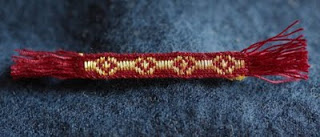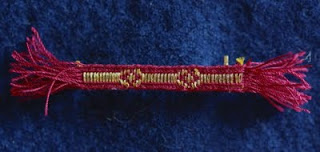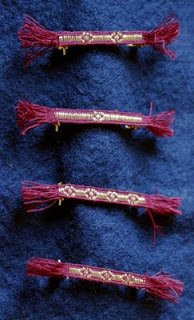For those of you who can't go there (or for those who would like a little preview), here are photos of the two "guys" standing in the Hartenstein exhibition. I took my camera to the opening ceremony, but had unfortunately not checked the batteries before, so I can only show you pics from the setup procedure - which means that the pictures show only the almost-finished state, with little details missing.
First, there's the miles from around 1200. It's a knight from the Teutonic order, and there were two possibilities for him for the exhibition, the warlike outfit and the courtly one. When we set up the exhibition, the warlike presentation was chosen, so he currently looks like this:
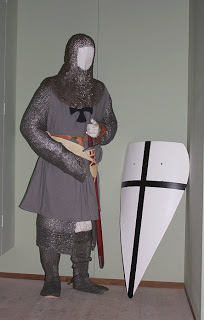
And this would be his courtly self:
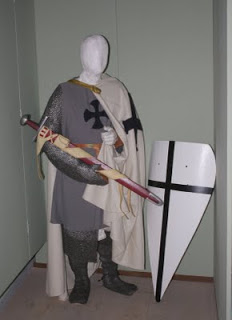
He's wearing braies, a pair of cloth hose beneath the mail, a wadded gambeson, the mail shirt with mittens attached, a tabard and then either a half-circle cloak or helmet and mail coif.
Isn't it amazing how much of a difference this makes?
And as the second "guy", we have the master of Hartenstein himself, caught in the act of donning his Great Helmet:

He's wearing braies, cloth and mail hose, a gambeson, a mail shirt, armour covered with silk cloth, knee protectors and vambraces. And gauntlets. And two helmets, of course - the bascinet with mail attached to protect the neck, the great helmet with a fish as the crest. (I hope I got all the English terms right - I'm not so used to translating weapons-and-armour terminology.) He isn't equipped yet with his shield and his sword - he only got those after the photo.
(He's cut off at the knees because there are tools and paraphernalia at his feet. He does have feet. Really.)
